On this day three years ago, the first eruption of the Fagradalsfjall volcanic system began. A volcanic system that lay dormant for over 7000 years once again spewed lava, creating a brand new landscape. It was also the day one of my childhood dreams began turning into reality. Inspired by the footage of people such as Katia and Maurice Krafft (make sure to watch ‘Fire of Love’ on Disney+), I had always wanted to see a volcanic eruption.
Since Fagradalsfjall awoke, I’ve photographed 7 volcanic eruptions, I visited them close to 100 times, wrote a book about my experiences and even received several awards for my photography surrounding volcanoes. My work has fascinated many around the world and even inspired people to seek out the beauty in that which is inherently frightening and dangerous. It was the start of the biggest rollercoaster ride of my life which kickstarted my photography career.
Today I want to share with you the most important lessons or truths I’ve learned the last few years documenting this natural wonder, which has a beautiful but also a dark side.
Special thanks to Einar Guðmann for sending me this photo of myself on the very first day of the Geldingadalir eruption.

In 2021, during the Geldingadalir eruption, I spent every available time I had to visit the area so I could document this incredible event.

Since the first eruption, I have been lucky enough to visit 5 other ones. Last summer, during the eruption at Litli-Hrútur, I posed proudly with my book about the first eruption called ‘New Earth’.
Photographing Volcanic Eruptions Is A True Privilege
From the very beginning, I became very aware of the uniqueness of what I was witnessing. To be there, standing next to an erupting volcano, is an opportunity not given to many. The fact we’ve had such small and approachable volcanic eruptions in Iceland (we even call them ‘tourist eruptions’ here), which occur within less than an hour driving, is already extremely unique in itself. However, what’s really unique is that we are allowed to approach them at our own peril and that makes it even more special. It’s definitely one of the best things about Iceland: freedom to roam.
Early on during the first Fagradalsfjall eruption, I began documenting it in as many ways as possible, which turned into fuel to write my first book, ‘New Earth’. The idea was to show as many possible sides, perspectives and aspects to it as I could think of. I wrote a whole blog about how the idea for my first book came to be.

Being able to approach these volcanic eruptions, with minimal protection, is a unique occurrence. I captured this image of two people walking along a ridge near the Meradalir eruption in 2022.

On day one of the first eruption, I managed to approach the flowing lava in such proximity that I barely thought about using my drone to get closer. I could just walk up to and capture images using my regular mirrorless camera.
The Most Impressive Part Is Not The Action Of Shooting Lava
Going with that uniqueness, I quickly discovered that the most impressive part of seeing an eruption was not the lava fountains towering above the area, or the speedy lava rivers running like snakes through the landscape. It wasn’t even how the lava comes to life at night, turning everything in gorgeous hues of red.
No, it was perhaps the thing I understood the most but didn’t quite grasp until I saw it with my own eyes. As the eruptions went on, everything was evolving and growing in front of my eyes. Each time I visited the area, I could see the changes to the landscape and how the new landscape was overtaking everything else that was there before.
On day one of the Geldingadalir eruption in 2021, there was a deep valley you had to descend in to reach the erupting cones. Today, there is a massive new lava field and on top of those two tiny cones, there is a brand new mountain. What’s even more impressive is that the main crater is now almost the tallest mountain in the area. I’ve seen what the area looked like before and having witnessed how it transformed, is probably one of the most mind-blowing experiences in my life.

This massive crater/mountain wasn’t there three years ago. The only thing you could see was a deep valley, with two tiny erupting craters within it.

The lava field created in 2021 still remains extremely hot to this day and it may continue to be that way for another few decades. I captured this photograph last December.
Drones Have Become Invaluable Tools
While the Geldingadalir eruption was quite small, and stayed small for a long period of time, the eruptions that followed weren’t quite like that. These eruptions were bigger and expanded much faster due to the topography of the area they occurred in. This meant that very quickly the conventional camera angles and perspectives diminished, limiting creativity. While in the beginning, I used my camera a lot, it had to make way for another type of camera as soon as the lava fields began to become too large.
Today we have these amazing tools called ‘drones’, which allow us to see perspectives and angles of eruptions that we have never seen before. The first eruption in 2021 turned into a fresh testing ground for drone photography and videography above volcanoes. Especially during the first two eruptions, I learned so much about how close you could go, what the better angles were, what effect lava has on the technology (other than heat), how to deal with heat, how to anticipate changing scenes, … This really opened doors to me and I felt it unlocked my photography and brought it to the next level. Today, I can’t imagine photographing an eruption without my trusty drone.
Want to learn how to get the best results with your newly purchased drone? I wrote the most comprehensive guide available on drone photography which teaches you a technique to get the DSLR-like results out of even the cheapest drones.

Using my drone I can see and photograph aspects to volcanic eruptions that have never been seen before. On top of that, I am able to take my time to really perfect the shots, like I did when I tried to capture this ‘lava dragon’.

Being able to send a camera into a situation you could never get into yourself has proven so invaluable. It has been really tricky to figure out how far I could push the drone (height, proximity, …) but today it comes really natural to me.

Under the right circumstances, I could even fly my drone in such close proximity of an active crater that I could capture what went on inside of it as you can see in this top-down image.
Using Reach To Educate And Inform Is Vital
While in the beginning, it was all about the photography and the art of what I was witnessing, I began shifting my attention more towards an educational and informational purpose. This especially began changing last summer, when the eruption in Litli-Hrútur was about to occur. I felt people weren’t really grasping the severity of what had been happening and started treating this violent natural force as if it were another attraction in Disneyland.
Because my photography around the volcanic eruptions had gained a lot of attention, with an increase in reach and following, I saw it as a unique opportunity. I wanted to harness that newly gained reach to try and use my social media to raise awareness. I started up an Instagram broadcasting channel on which I tried to keep people up-to-date if they want to visit the area or wanted to understand better what was going on at Fagradalsfjall. When the dramatic events in Grindavík unfolded last November, my channel took off because I became one of the few sources of information in English on what was happening. It’s at this stage, I especially felt educating and informing people had become part of my list of personal duties or responsibilities.
There is so much misunderstanding, and sometimes even a complete lack of knowledge, about volcanoes in the general public. Instead of just publishing impressive artwork of these events, I really wanted to help people to better understand them and so they could see ‘my’ volcanoes the same way I do.

Helping people understand what is happening in Iceland in terms of volcanic activity has become part of what I wish to do with my social media.
We Must Always Remember The People Involved
With the dramatic events that unfolded in the small fishing village of Grindavík (population 3800), the dark side of volcanoes has become apparent again. While the previous years have been a photographer’s paradise, that quickly changed when it became clear an entire society had been severely struck.
While the death toll has been very limited (one person) and ‘only’ a few houses were directly struck by lava, the real destruction lay underneath. Two significant magma intrusions caused enormous ground deformations, creating crevasses, cavities and even complete cave systems in a few hours time. The overall destruction inside Grindavík has been enormous, devastating the entire village. People didn’t just lose their property, they lost their homes and their entire community. Grindavík will never be the same again. Many people have already moved away permanently and trying to move on with their lives.
These dramatic events forced me to shift gears into something I never saw myself do: photojournalism. During the first four eruptions at Sundhnúksgígar, I shifted into a photographer who aimed to document the events, trying to show the human side of eruptions, showing the damage involved and helping those who were affected. I think in the last three years, we all grew a bit disconnected from the possibility that it wasn’t normal to stand next to an eruption, take photographs, eat food and even have a few beers.
We must always remember there are real people living in this area. Real people who lost everything in a few hours and now have to see their town be literally ripped apart by the volcanic forces underneath.

While there’s a bit of clever perspective trickery here, this photograph I took in February this year shows very well how close this is all occurring to Icelandic society. In the back you can see the gas release from the February eruption at Sundhnúksgígar.

This, to me, is one of the most compelling photographs I’ve taken in recent years. Seeing a lava flow take out an entire intersection and two roads really shows the devastation that has been ongoing at Svartsengi. On the road sign it says ‘Bláa Lónið’ or ‘Blue Lagoon’, which is the most popular tourist attraction in Iceland.
Conclusion
By writing this blog, I wanted to take a moment and reflect on the last three years of capturing erupting volcanoes. It still feels crazy to me that I can write that. What was once a childhood dream turned into a profession, which has allowed me to share my story in a unique way. Reflecting back on photographing six eruptions, I wanted to share that which has truly captivated me, and even moved me emotionally. The things I have been able to see and experience have been absolutely mind-blowing.
It’s safe to say that they have influenced me as a human being and a photographer. Not everyone gets to see mountains being born, not everyone gets to stand next to flowing lava on a, at one point, daily basis. And more importantly: not everyone is giving a platform on which they can try and inform and educate. Last year especially has put a lot into perspective for me and made me realise what’s important and what is not.
I wonder what volcanic madness will have occurred by the next anniversary of the awakening of Fagradalsfjall. Time will tell.
My Book: New Earth
When the Geldingadalir eruption of Fagradalsfjall started on March 19th 2021, Jeroen was there with his camera to experience and capture this volcanic event from a front row seat. It was the beginning of a genuine photographic journey which exceeded all his expectations. In this book, Jeroen shares his collection of images taken from day one until the very last day of the eruption. The photographs are strengthened by sharing his story about his experiences whilst photographing the eruption.
The book combines Jeroen’s photography of the eruption with interesting stories on how those photographs came to be. He also shares how this volcanic event left a big impact on him personally and how his experience started evolving together with the eruption.
Support Jeroen’s Work
As an independent photographer, Jeroen partially relies on your support to keep producing worthwhile content such as blogs, photographs, books and much more. If you want to support his work, it is possible to do so by buying his e-books & books, prints or calendars.
You can also sign up to the newsletter to stay up to date on new blog posts, projects, workshops and other interesting information.
Thank you for considering!

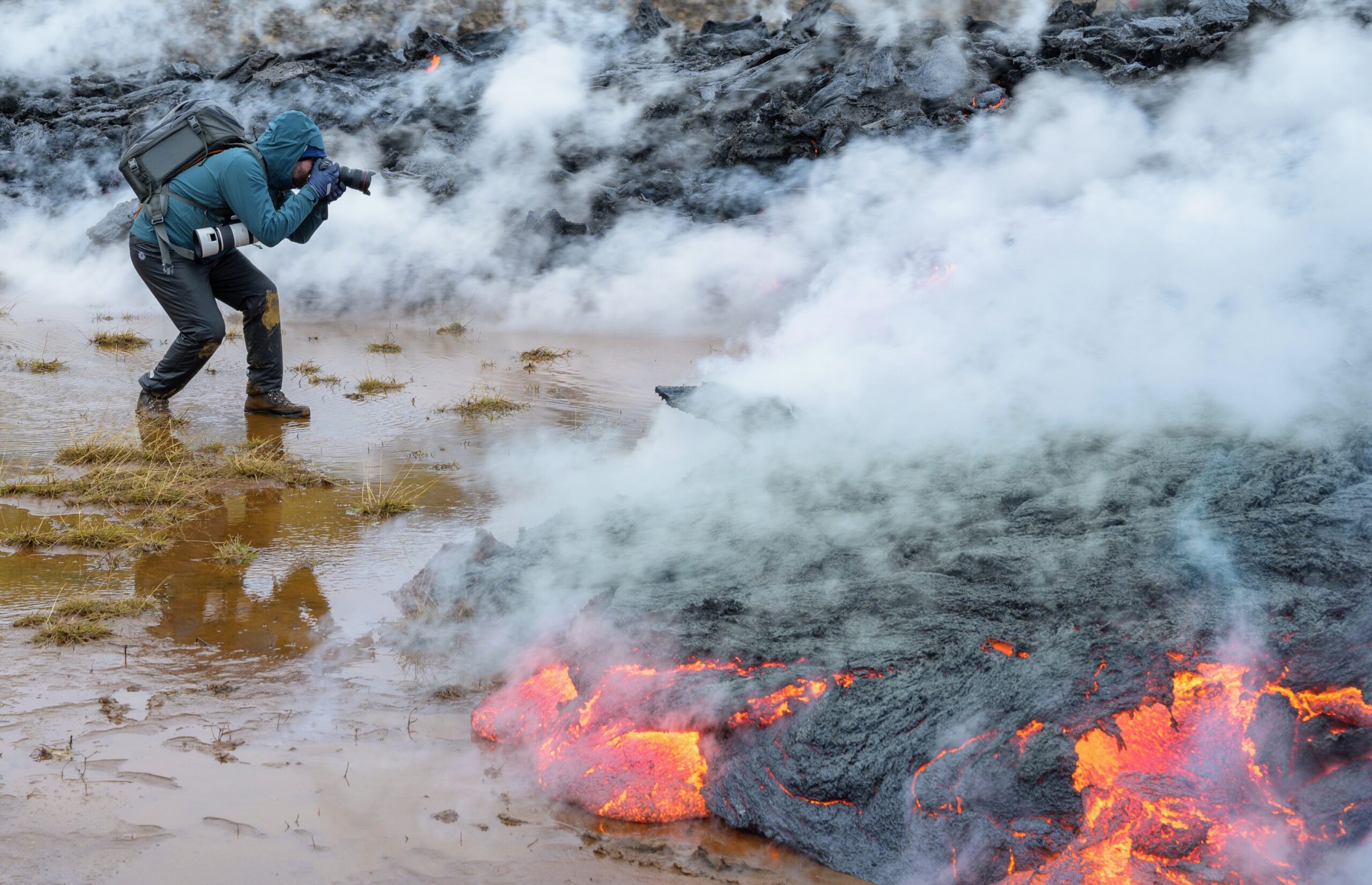

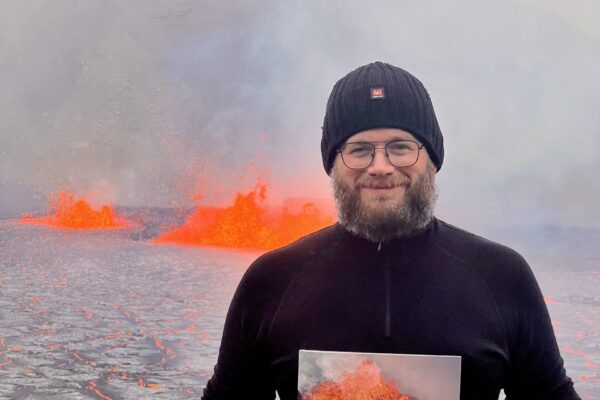
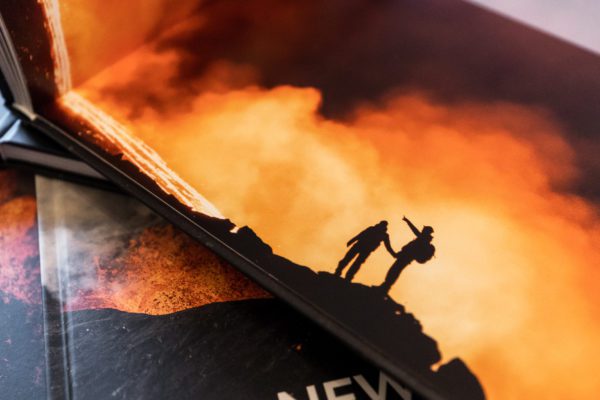
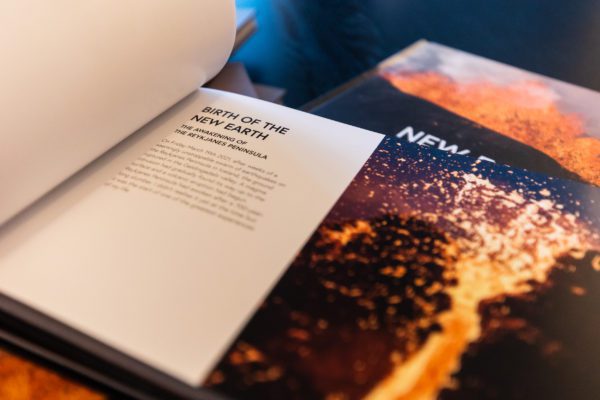
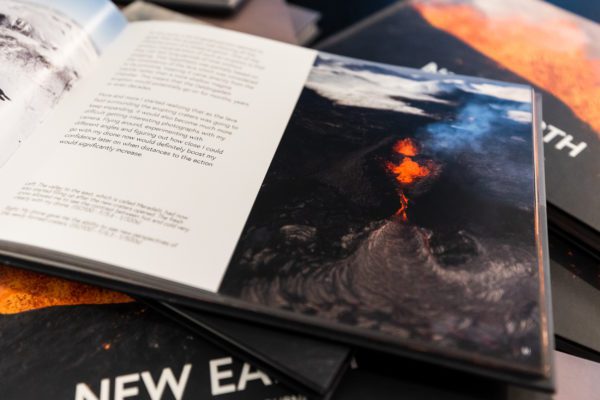



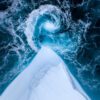


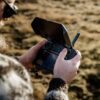
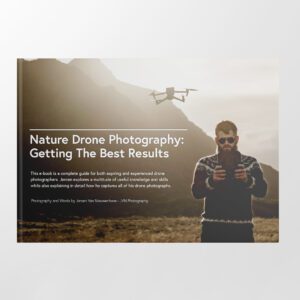
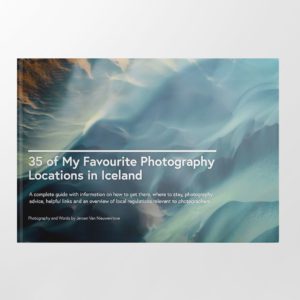
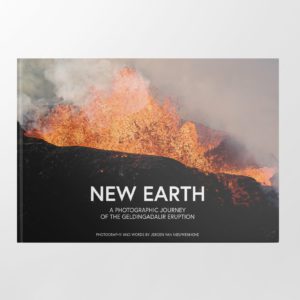
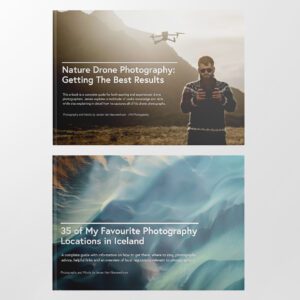
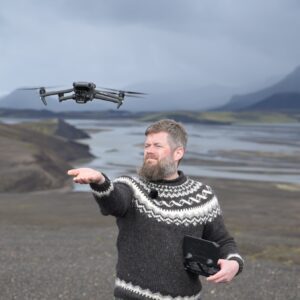
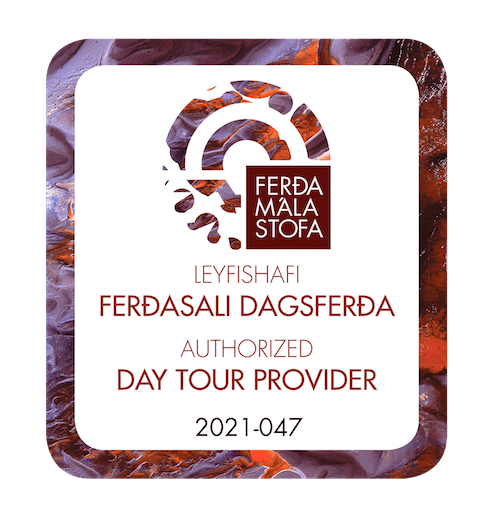
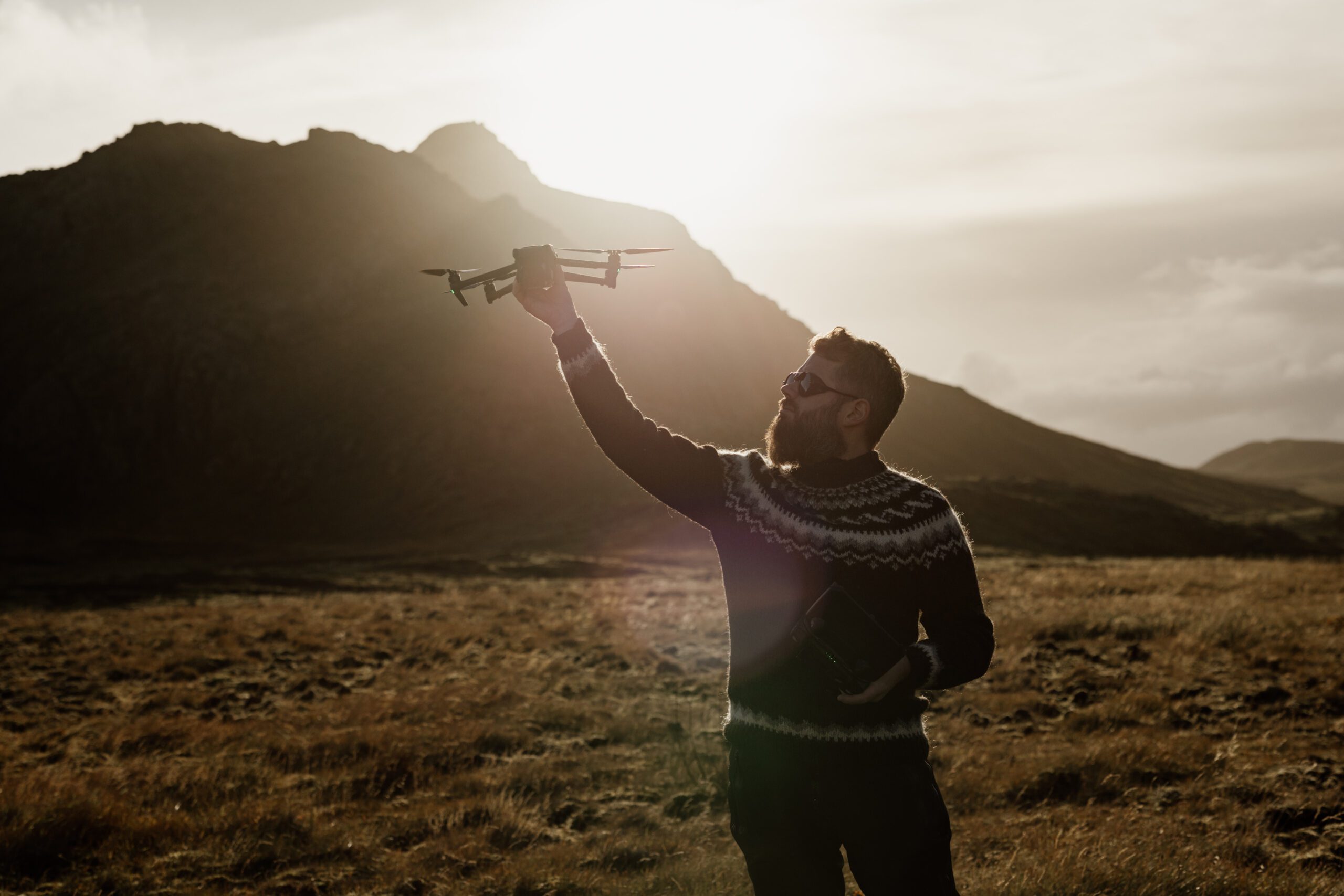
Very excited to read your “New Earth” book!!
Very interesting to read and I love that you help to educate people through your work.
I have only recently started following you through instagram, I was drawn in by your stunning photos and inspiring words and I appreciate that you take the time to update people on the current events of Iceland.
I hope to one day be fortunate enough to experience the beauty and ferocity that is a volcanic eruption but through a slightly different career route. My dream is on par with that of Katia and Maurice Krafft, I am currently studying Earth Sciences in hopes of becoming a Volcanologist in the future.
Keep up the fantastic work and safe journeys ahead!
Thank you so much!
Great blog Jeroen. Your passion, and compassion, are well evident.
I also really appreciate your views on the current eruption and ongoing news. Stay safe.
Thank you David! I hope both of you are doing well!